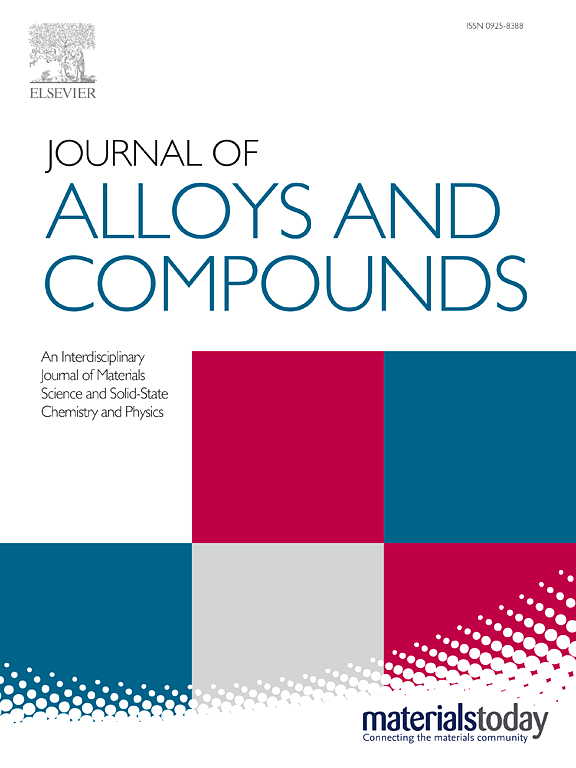CuCrZr合金低温轧制变形行为及宏、微观组织多尺度演化机制
IF 5.8
2区 材料科学
Q2 CHEMISTRY, PHYSICAL
引用次数: 0
摘要
针对CuCrZr铜合金在高强度和高导电性同时要求下延展性不足的问题,提出了双梯度控温轧制与时效处理相结合的工艺策略,对CuCrZr铜合金的性能进行了综合优化。这种方法在室温和低温下交替轧制,在低温变形时诱导纳米级孪晶,并利用温度梯度来调整合金的微观结构,从而提高其整体性能。经低温变形处理后,合金的极限抗拉强度为387.5 MPa,电导率为84.6% IACS,延伸率为12.45%。结果表明:与室温轧制相比,双低温轧制更有效地细化了晶粒尺寸,显著增强了S和黄铜织构成分,诱导了纳米孪晶,同时促进了纳米析出相的均匀分布和高体积分数。重要的是,低温轧制过程中引发的高密度位错重排和作为位错滑移通道的孪晶界有效地缓解了局部应力集中,从而显著提高了合金的延展性。此外,对各种强化机制的定量分析表明,屈服强度的提高主要是由于晶界强化和沉淀强化,而二次时效后残余的大量位错密度进一步强化了整体强化效果。本文章由计算机程序翻译,如有差异,请以英文原文为准。
Deformation behavior during low-temperature rolling and the multi-scale evolution mechanism of macro and microstructures in CuCrZr alloy
To address the insufficient ductility of CuCrZr copper alloy under the simultaneous demands for high strength and high electrical conductivity, we propose a process strategy that combines dual gradient temperature controlled rolling with aging treatment to comprehensively optimize the alloy’s performance. This approach alternates rolling at room and cryogenic temperatures, induces nanoscale twinning during low temperature deformation, and leverages the temperature gradient to tailor the alloy’s microstructure, thereby enhancing its overall properties. After the cryogenic deformation process, the alloy reached an ultimate tensile strength of 387.5 MPa, an electrical conductivity of 84.6% IACS, and an elongation of 12.45%. The results demonstrate that, compared with room temperature rolling, the dual low temperature rolling process more effectively refines grain size, significantly strengthens the S and Brass texture components, and induces nanoscale twinning while also promoting a uniform distribution and high volume fraction of nanoscale precipitates. Crucially, the high density dislocation rearrangement triggered during cryogenic rolling together with twin boundaries that serve as dislocation slip pathways effectively alleviates local stress concentrations and thus significantly improves the alloy’s ductility. Furthermore, quantitative analysis of various strengthening mechanisms shows that the increase in yield strength is primarily attributable to grain boundary strengthening and precipitation strengthening, while the substantial residual dislocation density remaining after secondary aging further reinforces the overall strengthening effect.
求助全文
通过发布文献求助,成功后即可免费获取论文全文。
去求助
来源期刊

Journal of Alloys and Compounds
工程技术-材料科学:综合
CiteScore
11.10
自引率
14.50%
发文量
5146
审稿时长
67 days
期刊介绍:
The Journal of Alloys and Compounds is intended to serve as an international medium for the publication of work on solid materials comprising compounds as well as alloys. Its great strength lies in the diversity of discipline which it encompasses, drawing together results from materials science, solid-state chemistry and physics.
 求助内容:
求助内容: 应助结果提醒方式:
应助结果提醒方式:


